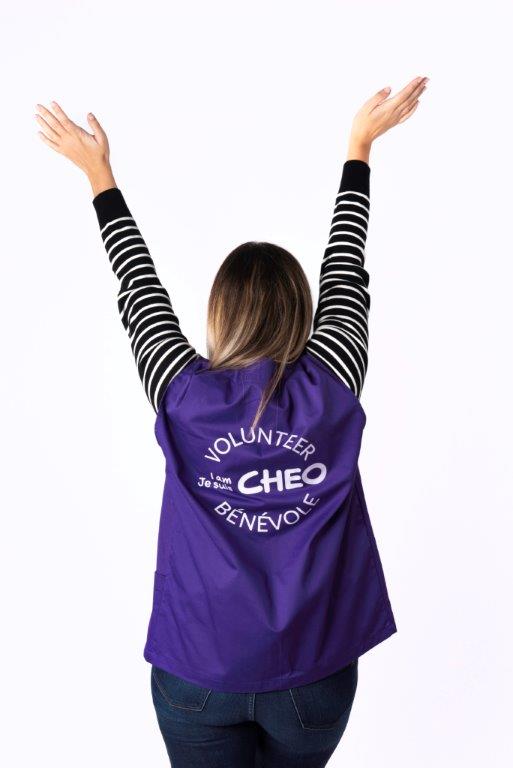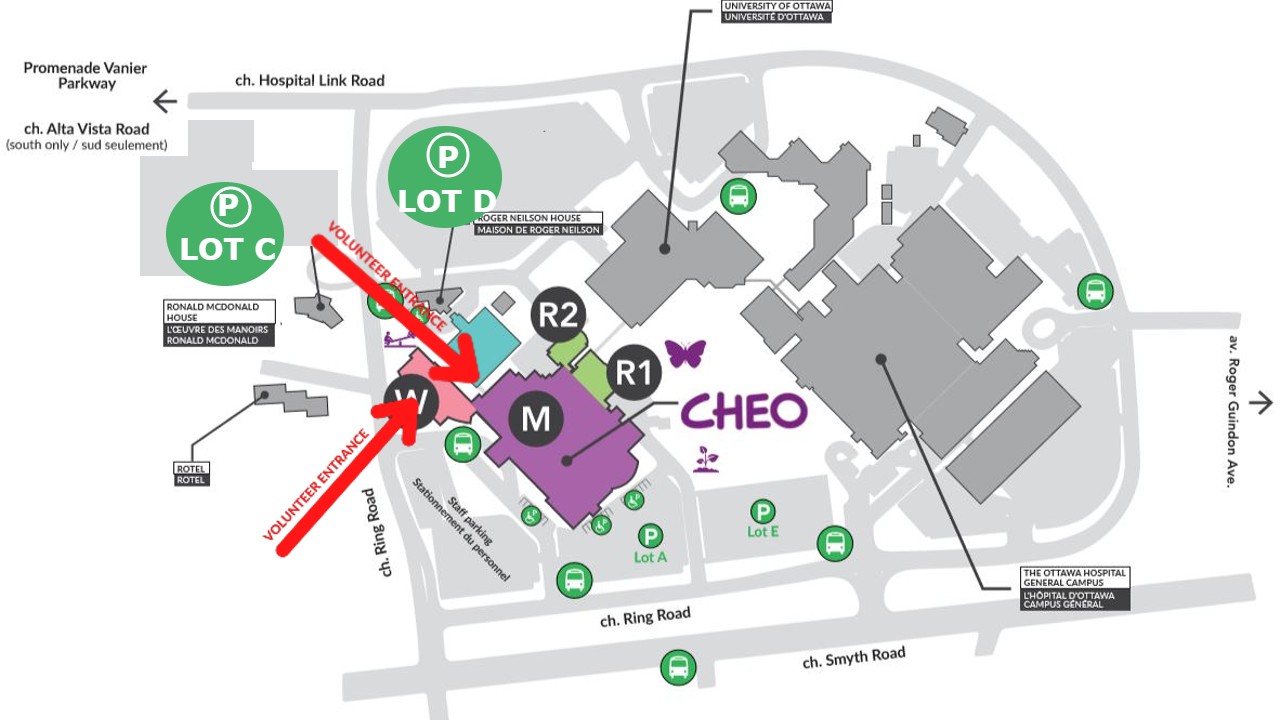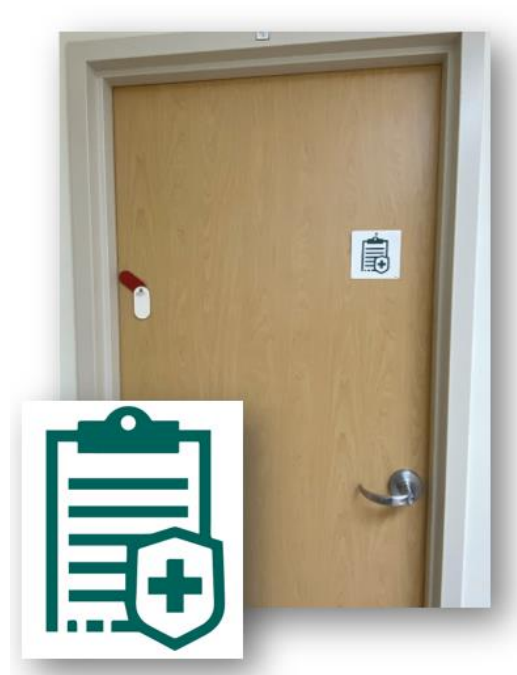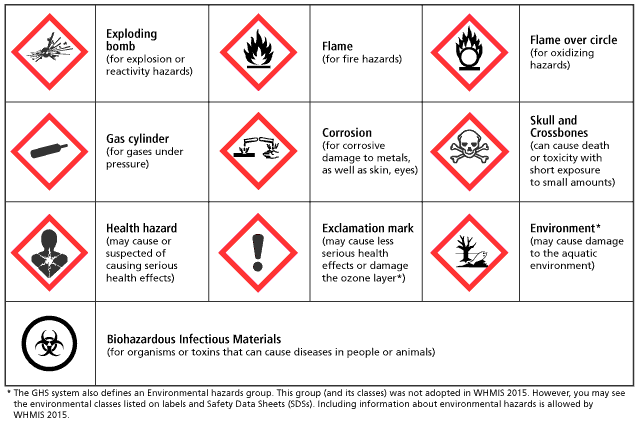Welcome to the CHEO Volunteer Orientation Manual!
Below you will find links, pages, and information that is necessary for you to have a successful volunteer experience at CHEO! Please be sure to read through everything below.
A welcome from our CEO, Alex Munter
As someone who grew up here in Ottawa, I have known and admired CHEO as an organization that is driven by people with compassion, incredible depth in skills, and a deep commitment to caring about children and their families.
What many people may not know is that CHEO only exists today because, back in the 1960s, a group of determined volunteers – led by young moms – raised awareness, argued the case, and generated the support to turn the dream of a children’s healthcare facility into a reality. CHEO was founded by the dedication of volunteers, and to this day, our volunteers continue to be a solid foundation allowing us to provide excellent patient care to children and youth in the community. Every day our team of passionate staff, physicians, and volunteers make it possible for kids to get healthy, stay healthy and thrive.
As a CHEO volunteer, you are an ambassador for the organization and your interactions with kids and families shape how people feel about the institution. It is volunteers like you who help give CHEO the great community reputation we pride ourselves on. Here is a great little example from a letter I received from a parent whose four-year old child came to our Emergency department earlier this year:
“As a parent, I can say first hand that it is invaluable to have a facility that is geared totally to children. From the washrooms with fixtures closer to the ground (where a woozy little boy can still do things “by himself”), to volunteers handing out colouring pages in the waiting room, to the wonderful educator who explained everything to him perfectly so that he wasn’t scared of the unknown, we left that day very thankful for all the extra thought and effort that goes into treating our little people”
Every volunteer role at CHEO is valued by staff, children, youth and their families. You help us help the kids of this community.
On behalf of all CHEO, I am pleased to welcome you to our team.
Tomorrow starts right here!
Sincerely,
Alex Munter
President and Chief Executive Officer
Get to know CHEO
| CHEO's Mission, Vision, and Values |
|
CHEO is made up of one team. This includes everyone - including volunteers! It's important for all volunteers to understand the vision, mission, and values of our organization.
|
| More than a hospital |
CHEO is constantly redefining what it means to be a hospital.Exceptional and integrated care is what families, children and youth deserve. We are committed to partnering with them and the community to provide this care — where, when and Read more here about how we are redefining what it means to be a hospital. This is how care at CHEO should feel:RespectfulWe are honest and trust each other. We protect privacy. We are sensitive to everyone's life experiences by respecting culture and differences. OpenWe communicate in a clear, meaningful and timely way. We create a safe space to express personal and differing views, ask questions and share feedback. We talk to our audiences in their preferred language and format. CooperativeWe work together in an honest, purposeful and fair way to benefit everyone. We include everyone's input in all parts of our work. SupportiveWe support each other's needs. This includes physical, developmental, social, emotional, mental and spiritual needs. We provide a place to learn and grow together, and partner on shared goals. Safety is always a top priority. |
| French Services at CHEO |
French Services at CHEOOver half a million Francophones live in Ontario, the largest group of French-speaking people outside Quebec. At CHEO, we’re proud to offer services in French to better meet the needs of francophone patients and families. The French Language Services Act: In May 1986, the Government of Ontario introduced the French Language Services Act. The Act guarantees the public the right to receive services in French in: Official bilingual designationCHEO was granted a partial bilingual designation in 1993. We continue to work toward making sure all of our public services meet full bilingualism requirements. To achieve a full bilingual designation, CHEO must continually demonstrate a commitment to offer services in French. This means CHEO will identify clients who are Francophone or who prefer to speak French when they arrive at CHEO. We will do this at many points along the way: during pre-admission, admissions, and clinic visits. Services available to staff include:
Bilingualism at CHEO:Since 1982, CHEO’s Bilingual Services department has been offering:
CHEO’s Advisory Committee on French Language Services meets regularly to ensure the French language is an integral part of services and life at CHEO. For more information on CHEO’s Official Languages Policy, please ask the team in Volunteer Resources. |
| Family and Youth Advisors |
|
It is important that we involve families and youth in decision making at CHEO, not just for their own personal health decisions, but also in organizational decisions. Family and Youth Advisors provide feedback to CHEO and bring forward their own ideas, to ensure that what we do is for familes and meeting the needs of our patients and families. Read more about our Family and Youth Advisors: |
All about Volunteering at CHEO
| Who is Volunteer Resources? | ||||||||||||||||||||
|
The Volunteer Resources team is responsible for the overall management of the volunteer program, carrying out the recruitment, screening, selection, placement, orientation, support and recognition of volunteers. They advise and support staff who engages with volunteers. The review of a volunteer’s involvement is a shared responsibility between Volunteer Resources and staff. Volunteer Resources is dedicated to making a volunteer’s experience enjoyable and positive!
CHEO fosters a One Team culture in which every employee, physician, trainee, volunteer and partner feels part of a single team that is equipped, empowered, educated and engaged; united with purpose on a single vision. |
||||||||||||||||||||
| Role of Volunteers at CHEO | ||||||||||||||||||||
|
The purpose of the volunteer program at CHEO is to engage volunteers in programs and activities that support and enhance the care that is being delivered to the children, youth and families, that supports a family centered care philosophy. Volunteering at CHEO can be both a rewarding and learning experience. We hope that you have a positive experience and gain a great sense of satisfaction. |
||||||||||||||||||||
| The Basics of Volunteering at CHEO | ||||||||||||||||||||
|
Looking after our families, staff, and volunteers
| How to Handle Questions, Concerns and Complaints from Families and Youth | ||||||
Patient ExperienceHow to Handle Questions, Concerns and Complaints To reach us:
|
||||||
| Religious Considerations | ||||||
|
Volunteer Resources should be contacted if a volunteer requests/requires special consideration to their grooming/attire due to religious practices. Special consideration will be granted if deemed safe for patient care. If it is not deemed safe for patient care, the CHEO will make every reasonable effort to reassign the volunteer, reorganize the schedule or find another solution. If these attempts at accommodation fail, the volunteer is expected to conform to CHEO’s policy. Any changes to scheduling as a result of Religious Observances will be accommodated. We do respectfully ask that Volunteers inform their staff supervisors of any changes to their schedule in advance, in order for their supervisor to be able to accommodate the vacancy. |
||||||
| Animal Assisted Therapy at CHEO: | ||||||
|
In CHEO's Animal Assisted Therapy program, trained therapy dogs help cheer up our patients and help them feel less isolated. Patients can hold or pet the dogs. And since dogs make great listeners, the children and youths can talk to the animals as much as they want, which gives them a chance to express their emotions. It's just one more way CHEO makes one’s stay a bit more like home. |
||||||
| Accessible Customer Service: What You Need to Know | ||||||
Accessible Customer Service: What You Need to KnowAt CHEO, we provide “customer service” through the care and support we provide. By reducing barriers and enhancing service for people with disabilities, we improve communication with patients and their families. As a result, providing accessible customer service is a means of providing outstanding care. CHEO's Annual Accessibility PlanThis plan has been developed for use between 2019-2024 - and developed by the Accessibility Working group, made up of patient and family representatives and staff from across CHEO. We want every patient, family member and visitor to feel welcome at CHEO. We want to make sure that everyone can get the most out of our hospital and services. We are committed to meeting accessibility needs for people with disabilities in a timely manner. Our goal is to provide everyone who walks through our door with barrier-free access to our facilities, policies, programs, practices and services. The plan is an important public document. It can be viewed here on the CHEO website: Accessibility. Interacting and Communicating with People Who Have DisabilitiesIt is not uncommon for some of us to be uncomfortable around people with disabilities. We may be unsure of what to do, how to act, what is correct, and what will offend. The most effective strategy is to be sensitive, flexible and honest. A lack of sensitivity can make the situation awkward, and may cause unintentional discrimination. Talking about disability is often difficult, partly because the appropriate terminology is unclear and often laden with negative connotations. The most appropriate terminology, “person with a disability,” puts the emphasis on the person, not the limitation or disability. Treat people as people. Address a person with a disability by his or her first name, only when extending the same familiarity to others. Different cultures also view disability differently and may not share the common view of disability as a physical or physiological issue. Be aware that people from other cultures may be embarrassed if you draw attention to the person with a disability. Above all, be respectful, polite, and considerate, offer assistance, communicate effectively and don’t hesitate to ask questions. Treat all people in the same way you would wish to be treated yourself. Terminology and Communication Tips
What’s Available at CHEO?Some ways CHEO makes services accessible to people with disabilities include:
|
||||||
| Awareness Quiz | ||||||
|
Once you have reviewed this section, please complete your Awareness Quiz by clicking the button below. Awareness Quiz |
Staying Safe and Healthy
| Volunteering Safely | ||||||||||||||
|
CHEO is committed to taking reasonable measures to protect volunteers and expects volunteers to adhere to all established safety related policies and procedures. Volunteers recognize and accept that their activity may involve personal risk and could result in bodily injury or illness. It's important you are aware of the following in order to volunteer safely:
If you are hurt or need help: Volunteers must immediately report any health or safety hazard and injury sustained during the course of their volunteer activity, to their program staff and Volunteer Resources. Volunteers and their supervisors are to report themselves to the Occupational Health office, Monday to Friday, between 8 a.m. and 4 p.m. for an assessment. After hours, present yourself to CHEO’s Emergency Department. All incidents must be reported and documented in the volunteer’s file with Volunteer Resources.
|
||||||||||||||
| Common Allergens | ||||||||||||||
|
In order to reduce the risk of exposure to a food allergen for patients, volunteers are asked to, prior to arrival at CHEO, refrain from bringing foods that are most likely to cause severe anaphylactic reactions, such as peanuts / tree nuts. Peanut residues are oily and can easily be spread from hand-to-hand and also on surfaces. In the event of contact with “peanut products”, hand washing with liquid soap is required. Use of hand sanitizer is insufficient to get rid of peanut/nut protein residue. Allergies to latex rubber, such as latex gloves and other medical supplies, can be prevented by protecting patients/families and staff from latex exposure. Volunteers are asked to be mindful when wearing First aid tape or bandages. CHEO uses Mylar (foil type) balloons from our gift shop. Due to our safety and infection control guidelines, patient allergies, and limited space, we cannot accept any donations of food products, used toys, stuffed animals, books, electronic games/videos and homemade toys/crafts. While many stuffed animals and toys appear new and clean, we still cannot accept them because they may have been exposed to germs, dust, pets and bacteria. All of these create a risk to our patients who may have allergies and fragile immune systems. Items we distribute to patients and families are provided through the Foundation. CHEO is also a scent-free environment. Avoid heavily scented products and perfumes. |
||||||||||||||
| Infection Prevention and Control | ||||||||||||||
|
When performing in a healthcare setting, all patients should be considered to be a potential source of infection. Infections can be spread from patient-to-patient, patient to staff/volunteer, staff/volunteer to patient, or from staff/volunteer to staff/volunteer. The objective in providing volunteers with the following infection control information is to protect you from getting an illness while performing at CHEO and to protect our patients from getting an infection from you.
COVID-19 Vaccinations and CHEO volunteers: COVID-19 Universal Masking Point of Care:
|
||||||||||||||
| Hand Hygiene: The facts and the friction! | ||||||||||||||
Why is Hand Hygiene so Important?Cleaning your hands at the right time and in the right way are the most important means of preventing Healthcare Acquired Infections (HAI's). HAI's make our patients sick, increase costs to parents who have to take time off work, and to CHEO, and increase the length of stay in hospital. Practicing proper hand hygiene is one way of maintaining the patient safety culture at CHEO. There are two ways to clean your hands:Hand Rub with alcohol-based solution, and hand washing with soap and water. Hands should always be cleaned before preparing, handling, serving or eating food, and washed (soap and water) after using the washroom.
The Four Moments of Hand HygieneThe four most important moments for performing hand hygiene (HH) are the following:
|
||||||||||||||
| Security and Emergency Preparedness | ||||||||||||||
|
||||||||||||||
| Fire Safety at CHEO | ||||||||||||||
The CHEO Fire Alarm System
The CHEO Fire Alarm System is a two-stage multi zone system. It operates as follows;
The Fire Alarm paging system is the only authorized method of announcing “All Clear” and terminating the Fire Emergency Procedures. What is a CODE RED?
What do I do if I see a fire?
|
||||||||||||||
| Introduction to WHMIS: Workplace Hazardous Materials Information System | ||||||||||||||
|
WHMIS is a short form for Workplace Hazardous Materials Information System. It is a comprehensive plan for providing information on the safe use of hazardous materials used in Canadian workplaces. Information is provided by means of product labels, material safety data sheets (MSDS) and worker education programs. WHMIS became law effective October 31, 1988.Volunteers will not be expected to handle or interact with chemical products and medical gases. As a volunteer, you have the right to know about the hazards of chemicals that may be used in the areas where you volunteer. CHEO must provide you with information about hazardous products.
|
||||||||||||||
|
Respect in the Workplace
|
||||||||||||||
|
Volunteers and staff have the right to carry out their activities in a safe and healthy environment in which all individuals are treated with dignity and respect. It is understood that employees and volunteers have the responsibility to act professionally, courteously and respectfully in all interactions. What one person considers as proper behaviour, another may perceive to be harassment. The test is in how we treat one another in our daily interactions.
|
Next Steps -
Getting Started at CHEO
|
Volunteer Agreements and Personal Health Information Package. |
I have read and understand all the policies and procedures - now what?First, you need to read through and sign an Agreement to Volunteer at CHEO. You can find this link here: Agreement to Volunteer at CHEO Next, you must read through and sign a Confidentiality Agreement. You can find this here:
Do you need parking while at CHEO? Please complete the Parking Agreement here: Finally, you must collect your personal health documentation which is to be sent by email and includes:
This must be emailed to vresources@cheo.on.ca once complete. Download your Health and Personal Information package
|
| Police Record Check |
What about a Police Record Check?All roles at CHEO require a Police Record Check, however they do not all require the same level of Police Record Check. We have provided you with a letter via email to upload to the Ottawa Police Service website: https://www.ottawapolice.ca/en/contact-us/Police-Record-Checks.asp Police Records Checks may have fees involved - the volunteer is responsible for the fee upfront. CHEO commits to reimbursing volunteers the 10$ fee that Ottawa Police charges volunteers after 3 months of service to CHEO (Volunteer Probationary Period). The volunteer is responsible for requesting this reimbursement once three months has passed. Should you have questions or concerns regarding the Police Records Check process please contact vresources@cheo.on.ca. |
| Role Placement |
Wait - where am I volunteering?!Volunteer Resources will place new volunteers into volunteer roles based on the following, in order:
We understand that some people hope to work in a specific program or location, though this is not always possible. Should we not be able to immediately assign you to a volunteer role, we may invite you to be added to a casual pool of volunteers, and will prioritize you as soon as we have upcoming vacancies that suit your availability. Volunteers are permitted to change roles, though due to the nature of the environment, the training and observation required of a new volunteer, and the challenges of scheduling over 800 volunteers, we ask that volunteers support their assigned unit for a minimum of 8-12 months prior to changing roles. |
| Orientation |
CHEO Volunteer OrientationVolunteer Resources provides this manual and an in-person general overview when you first arrive for your first shift. If possible, we aim to link you with another volunteer who has been with CHEO longer and is comfortable in the role. They can show you around the office and unit for your first day or couple of shifts. Program Specific OrientationProgram staff is responsible for the orientation, training, integration and performance of their assigned volunteers. They liaise with Volunteer Resources, contribute feedback towards a volunteer’s integration and assist volunteers where possible. Furthermore, they monitor and reinforce policy and procedures. Program staff will provide specific orientation and training to volunteers assigned to perform in their areas, based on the responsibilities outlined in the role description. They will assist with guidance, and shall be available for consultation, assistance, and direction. Volunteers agree to follow the direction and guidance of CHEO staff to which the volunteer has been assigned to carry out their activities. |
| On your first day as a CHEO volunteer |
|
Get ready to receive a lot of information, as well as a big welcome from the Volunteer Resources team. We will send all the details regarding your first day once we have confirmed the date!
We are glad to have you on board! Welcome to CHEO.
Your biggest fans, Andrea, Nanette, and Courtney. |











